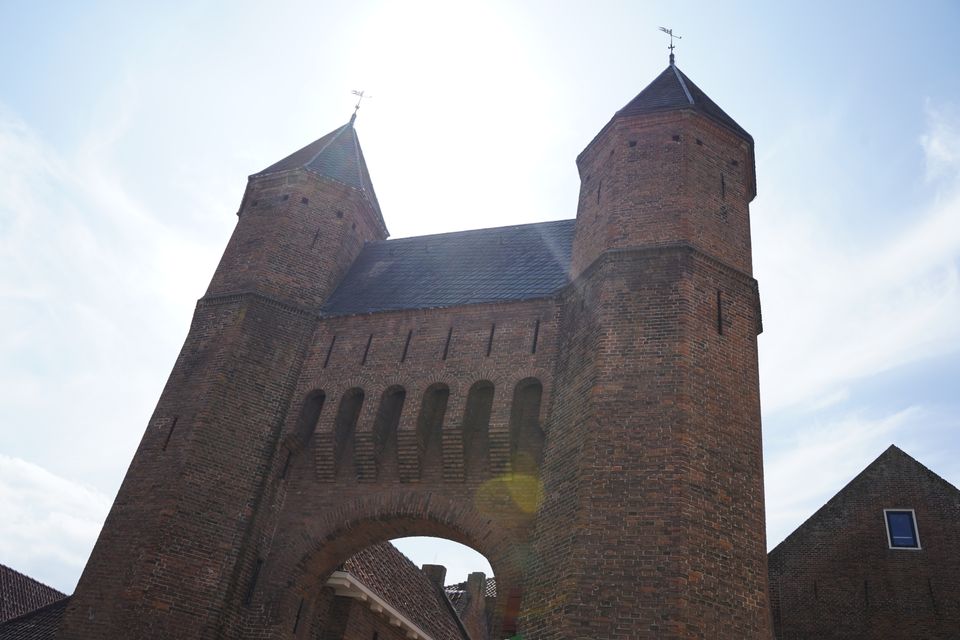The imposing Kamperbinnenpoort is a real eye-catcher. If you walk under it, many more historical features can be discovered at Kamp. From beautiful gable stones to hidden paradises chock-full of history. But let me start with the history of the gate.
The origins of the Crested Gate
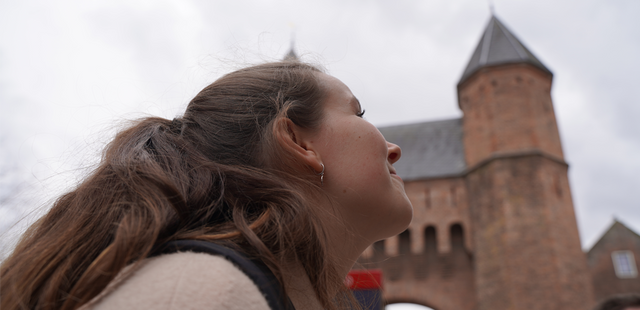
The Kamperbinnenpoort is a land gate that stands between Langestraat and Kamp. It is one of the last remnants of Amersfoort's first city wall, of which the Muurhuizenpart of. Because the city grew tremendously, a new gate was built around 1380; the Kamperbuitenpoort. As a result, the inner gate lost its military function. That's what the new gate was now for. By the way, the name Kamp comes from the Latin word campus. Which stands for a fenced meadow area. The area outside the first city wall.
Thus the name Kamperbinnenpoort was born. Another name for this gate was the Viepoort. Because of the vie (cattle) that were brought out to graze through the gate. This also gives a bit of an idea of the area's size. The road leading to it was still called Coecamp or Oude Strate in 1388, but from 1521 the name Kampstraat is used. A name that was used until 1914.
Demolish or preserve
Once, by the way, the gate was a lot bigger. Only the front gate remains. In the 16th century, most of the main gate was demolished. And in 1827 the arch between the towers. Fortunately, it was rebuilt in the 20th century. Salient detail: in 1914, the Amersfoort City Council wanted to demolish the gate. A traffic square was needed. But the central government disagreed and provided a subsidy for restoration. And fortunately so, because now we can still admire this old gate.
Look up

That Kamp is an old street is proven by its 22 national monuments. For that beauty you sometimes have to look up. For example, at Kamp 2 you will find The Snuff Mill. On the facade stone you see a mill, standing on a hill covered with tobacco plants. Tobacco was once ground in this mill. Nice for snuff and that was especially popular in the Golden Age. Amersfoort was a real trading city and tobacco was therefore also widely traded. Our sandy soil proved perfect for growing tobacco. From 50 growers in 1636 to 200 in less than 50 years! You can still see this history at Hotel de Tabaksplant. Tobacco was still dried there until the 18th century.
The Beehive
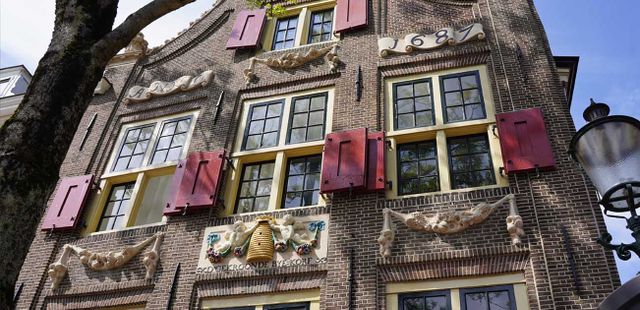
Perhaps the most beautiful facade in Amersfoort can be found at the corner of Kamp and Coninckstraat. This monumental house with neck gable has vases, carvings, garlands and the year ribbon 1687 on the outer corners. The name D'Gekroonde Bye-Korf is inscribed on a gable stone. It depicts a beehive crowned by two cherubs. Originally a warehouse, it also served as an office and coffee and tea store. Fun fact: KLM dedicated a Delft blue house to this building in 1956.
Court of the Poor de Poth
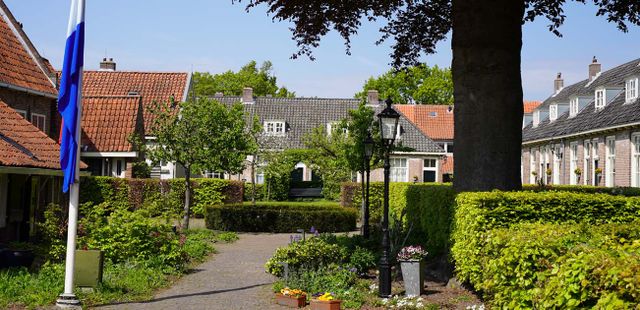
Our hidden gem. That's how the medieval Hofje de Armen de Poth is also affectionately called. Where the name comes from? Sometime in 1350, the Brotherhood of the Holy Spirit began caring for the sick. They also distributed meals to poor Amersfoorters. These donations were popularly called "the Poth. To which the friars owe their nickname the "Pothbroeder's. Around 1525 the friars moved from the Heilige Geestkapel to the hofje the 'Pothof'. And since then the hofje is called the Poor de Poth. What happened to the friars and how it came that there were also sisters? You will find out during a visit to this oasis of peace in our bustling city.
Walk the city wall

Getting all zen after your visit to the Poth? Walk along part of our city wall. Here you can even walk on top of the wall and have a beautiful view of the inner city. The city wall is about 7 meters high and has arches. Over the arches runs a wall with battlements. Behind it, the city's defenders could hide. And do you see that little tower? It is called an arkel tower. A small watchtower. Are you walking here anyway? Then also walk into the nearby park and enjoy the huge trees. Is the weather nice? Roll out a rug, as this is a wonderful place to picnic.
The bull
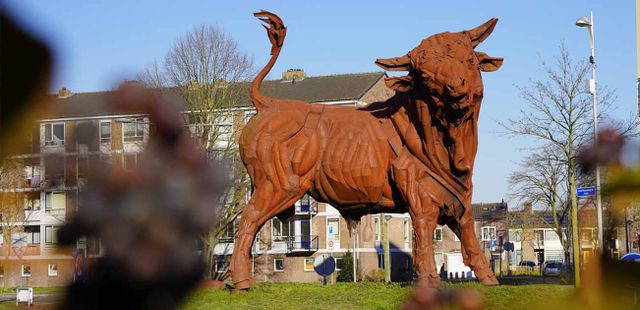
A bit more recent in our history you will find the story of Dé Stier. Created in 2006 by Amersfoort artist Thijs Trompert, for the manifestation Urban Wijland. De Stier, according to Trompert, is a subtle commentary on urbanization. He seems lost in the city, but still found a patch of grass. Previously, the bull (then made of wood) stood on Stadhuisplein.
It has been on display at the camp since 2007. On July 30, 2009, the artwork was unfortunately set on fire. Thijs Trompert therefore made a lout-proof variant. And in March 2011 it was returned to its place with great ceremony. There it has been roaring for years. Except for that one summer evening when it suddenly disappeared. And turned out to make a dance at festival Into the Woods!
Tip: the bull is part of the Streetart Bike Route #bikeride033. This route takes you past the coolest Amersfoort street art.
Besides unique pieces of history, the Kamp has much more to offer. You can enjoy a day of shopping with friends on a culinary world tour. Will you stop by?
Curious what else can be found at Kamp? You'll discover it here.
